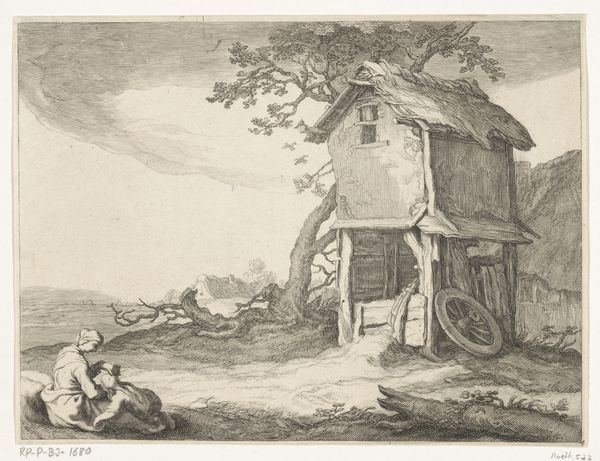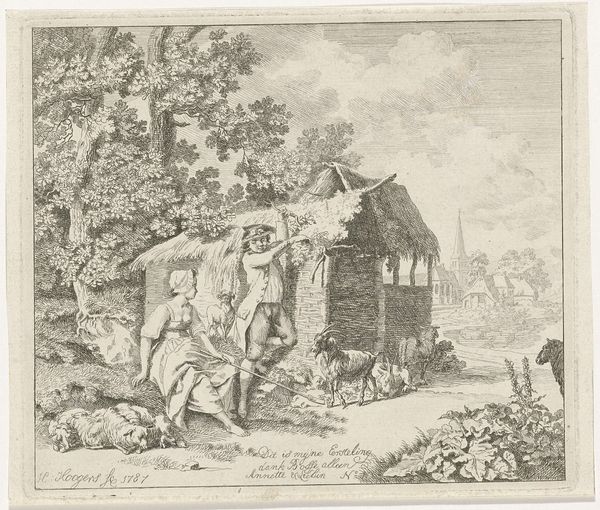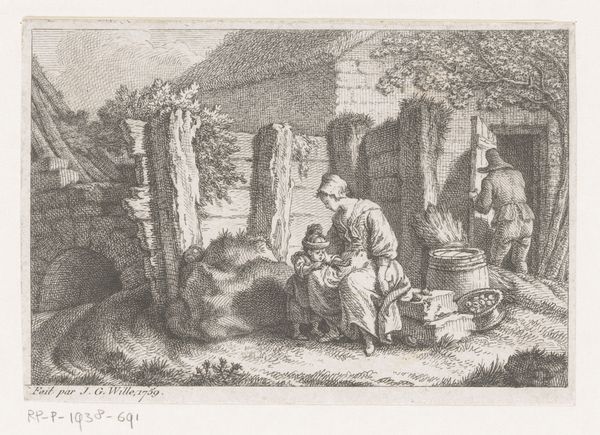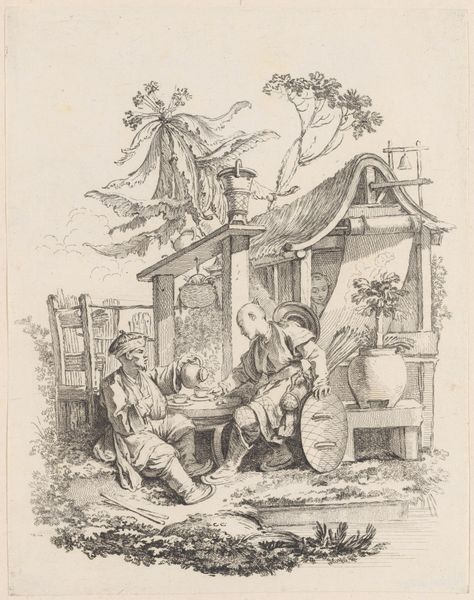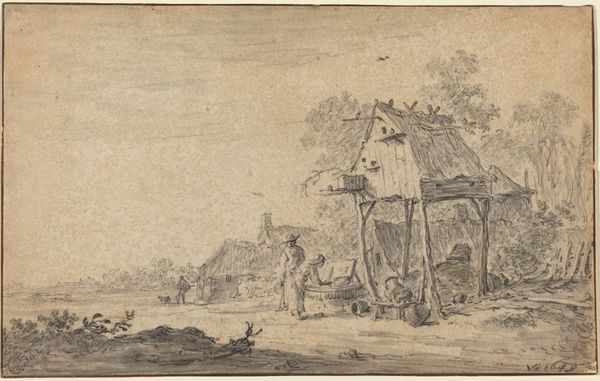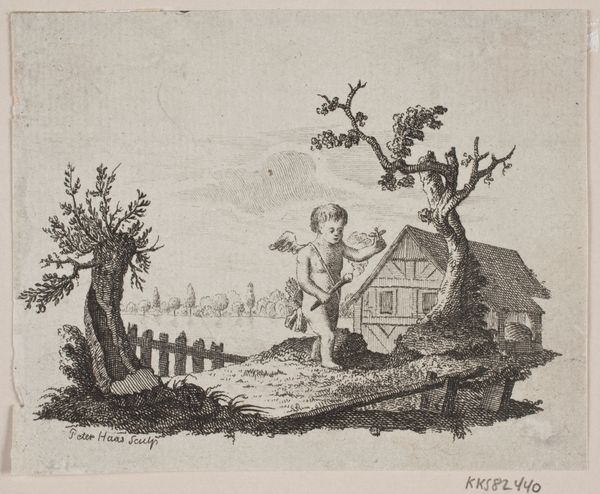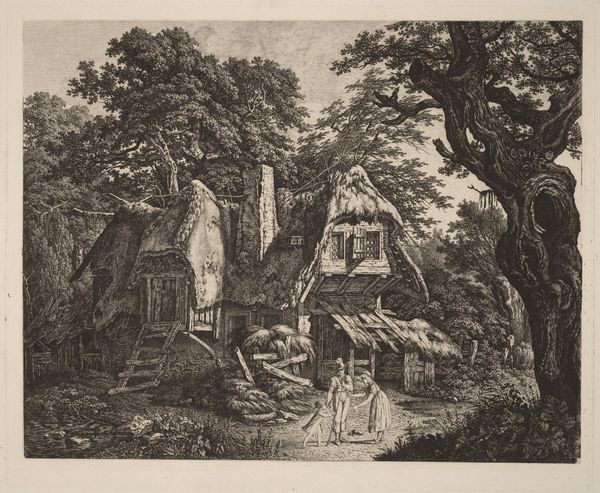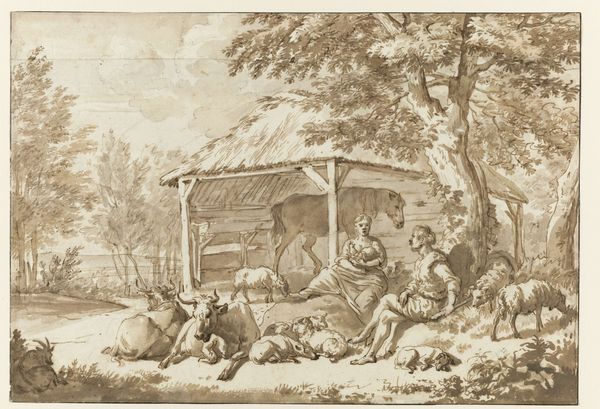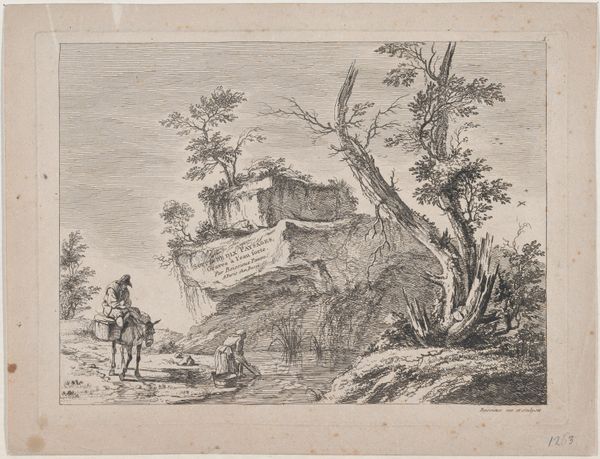
drawing, print, ink, engraving
#
portrait
#
drawing
#
baroque
# print
#
pen illustration
#
pen sketch
#
landscape
#
ink
#
pen-ink sketch
#
sketchbook drawing
#
genre-painting
#
engraving
Dimensions: height 160 mm, width 210 mm
Copyright: Rijks Museum: Open Domain
Editor: This is "Man voor een boerenhut," or "Man in Front of a Peasant Cottage," an engraving by Cornelis Bloemaert, dating from around 1630-1633. There’s almost a stillness to it; the man is at rest, but the dwelling looks quite rundown. How do you interpret the contrast between the man and his surroundings? Curator: It's a powerful contrast, isn't it? Bloemaert here is likely engaging with contemporary social issues through genre painting, portraying rural life which had both admirers and detractors. The crumbling cottage hints at hardship, maybe reflecting anxieties around poverty that were circulating amongst elites. Note the idealized form of the peasant man. What purpose do you think this idealization served? Editor: Perhaps to make him sympathetic? Or maybe to create a certain picturesque aesthetic that would appeal to wealthier audiences? Curator: Precisely. These images functioned within a visual economy; prints like these were collected. Bloemaert might be responding to market demands but also shaping ideas about peasantry and labor in a changing society. Consider, for example, the role of such images in reinforcing social hierarchies or fostering charitable sentiments among wealthy art collectors. Editor: That's fascinating. I hadn't considered the role the *viewer* plays in constructing the image's meaning and impact. Curator: The circulation of prints was key. They weren't just representations, but active agents in shaping public opinion and taste, particularly regarding social issues and class distinctions. I wonder, does the work make you reflect differently on landscape art as political art? Editor: Absolutely. It makes you consider not just *what* is being depicted but *why,* and for *whom*. Thanks, that gives me a lot to consider.
Comments
No comments
Be the first to comment and join the conversation on the ultimate creative platform.
